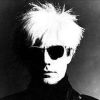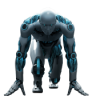The Nanogirl News~
From: "Gina Miller"
The Nanogirl News
October 18, 2002
House Gets Own Nanotech Legislation to Consider. One month after the Senate Commerce Committee passed legislation promoting nanotechnology funding and development, Rep. Mike Honda, D-Calif., introduced the Nanoscience and Nanotechnology Advisory Board Act on Thursday. The bill, H.R. 5669, would establish an independent advisory board comprised of leaders from industry and academia to advise the President and Congress on research investment strategy, policy, objectives and oversight related to the government's National Nanotechnology Initiative (NNI). (DC Internet 10/18/02) http://dc.internet.c...cle.php/1484461
Nano-Machines Get Some Fresh Air. For nanometer-sized machines, air is so thick it saps their energy. That means most contraptions must be confined to vacuum chambers. But now physicists report that a little laser light can help nanomachines operate in open air. The advance could open the way for ultrasensitive biodetectors. (inSight 10/2/02) http://www.academicp...2002/graphb.htm
Study reveals nanoscale structure in amorphous material. The common view that amorphous materials are simply jumbled collections of atoms may give way to a more ordered theory of the materials' formation, according to experiments conducted at the University of North Carolina. Studies of an amorphous form of zinc chloride have revealed an unexpected order at nanoscale distances that may lead to new engineered materials in a wide number of industries, said project head James Martin. "What I'm calling 'amorphous-materials engineering' will allow us to design nanostructures and then go in there and make them, [just as] we do with crystalline engineering today," (EETimes 10/18/02)
http://www.eet.com/a...EG20021017S0040
MIT model predicts birthplace of defect in a material. Applications include anotechnology, more. Defects such as cracks in a material are responsible for everything from malfunctioning microchips to earthquakes. Now MIT engineers have developed a model to predict a defect's birthplace, its initial features and how it begins to advance through the material. The model could be especially useful in nanotechnology. "As devices get smaller and smaller, understanding the phenomena of defect nucleation and growth becomes more and more important," said Subra Suresh, head of the Department of Materials Science and Engineering (DMSE). A seemingly minuscule dislocation--a local disorder in the arrangement of atoms inside a
material--or a crack can drastically compromise the performance of a device.
(Eurekalert 10/1/02)
http://www.eurekaler...t-mmp100102.php
(Profile) Even though Lucent Technologies' recent bad news could spell trouble for its famous R&D facility, Bell Labs' Nanotechnology Research Director John A. Rogers is hopeful his people and projects will escape the budget axe. On Friday, the company announced an additional 10,000 company-wide job cuts, reduced earnings expectations and $4 billion of additional charges against its third quarter revenues and equity. Not good news, certainly, and coming on the heels of Bell Labs' recent announcement it fired ethically-challenged researcher Hendrik Schön for falsifying data and results, the timing could have been better. (Nanotech Planet 10/15/02)
http://www.nanoelect...ticle/0,4028,10
500_1481591,00.html
Chemists Synthesize Key Component in Drive Toward Molecular Electronic Devices. University of Chicago chemists have successfully synthesized an electronic component the size of a single molecule that could prove crucial in the continuing push to miniaturize electronic devices. The component, called a molecular diode, restricts current flow to one direction between electronic devices. In the semiconductor industry these components, called p-n junctions, form half of a transistor. Man-Kit Ng, a 2002 Ph.D. in Chemistry, and Luping Yu, Professor in Chemistry, describe their diode in the Oct. 2 issue of the journal Angewandte Chemie and online Sept. 12 in the Journal of the American Chemical Society. (aScribe 10/1/02)
http://www.ascribe.o...133336&time=21%
2004%20PDT&year=2002&public=1
Advances in materials science excite professor. Arthur J. Freeman, an oft-quoted expert in quantum modeling, sees the most exciting days ahead in the field to which he has dedicated more than 40 years of work. The reason? An opportune convergence of affordable supercomputing, breakthroughs in nanotechnology, and a new field of study called computational materials science. (The Sun Times 10/16/02)
http://www.suntimes....fin-ecol16.html
Bugs trained to build circuit. Bacteria lay bricks on nano scale building site. Bacteria have found a new vocation - as nanoscale construction workers. Such bugs might form microbial machines that could repair wounds or build microscopic electrical circuits. Tetsuo Kondo of the Forestry and Forest Products Research Institute in Ibaraki, and his colleagues, used a grooved film to train the bacterium Acetobacter xylinum to exude neat ribbons of a biological building material - cellulose1. The bug laid down strips at a rate of 4,000ths of a millimetre per minute. (Nature Science
Update 10/8/02)
http://www.nature.co...7/021007-1.html
Nanoscale electronics. Bustling research is producing sophisticated laboratory demonstrations, but commercialization of nanometer-sized devices remains a ways off. At first there were only a few of them, but recently, their numbers have multiplied wildly. Newspaper headlines, magazine articles, journal papers, even television commercials now are loaded with those big "nano" words: nanometer, nanoscale, nanosecond, and nanotechnology, to name a few. And it seems that every week some
organization is announcing yet another "nanoconference." -2 pages-(C&E cover story 9/30/02)
http://pubs.acs.org/...lectronics.html
IBM grows nanotube patterns on silicon wafers. IBM Corp. has grown catalyst-free nanotube networks on silicon carbide substrates, the company said last week. With atomic-force microscopy verifying the results, researchers at the T.J. Watson Research Center set up grids of nanotubes (in rows and columns), bringing the promise of nanotube transistors arrayed across silicon chips one step closer to reality, IBM said. (EETimes 9/30/02)
http://www.eet.com/a...EG20020930S0013
Altair Nanotechnologies Receives Order From F.W. Gartner Thermal Spraying Co.; Shipment of Nano-Structured Thermal Spray Product Produces $60,000 in Revenues. Altair Nanotechnologies (Nasdaq:ALTI) today announced that it has received another order from Houston-based F.W. Gartner Thermal Spraying Co. to provide more than 1,000 pounds of one of its patented, nano-structured titanium dioxide-based thermal spray products. (Stockhouse 10/17/02)
http://www.stockhous...&newsid=1358937
Nanocylinders Open Way To Polymer Electronics. International team of scientists succeeds in synthesizing new supramolecular materials for optoelectronics from organic crystals and polymers. A team of German and American scientists have succeeded in combining conventional organic molecules and conductive polymers to form highly symmetric, structured materials with new electronic properties. After the attachment of specific functional groups, the disc-like or ring-shaped organic molecules organize into highly symmetric cylinders, three nanometers in thickness and 50-100 nanometers in length, just like a roll of coins. (MaxPlanck Society-Press
Release- 10/2/02)
http://www.mpg.de/news02/news0223.htm
Intel Tuesday unveiled its strategy to cram some of its chips with 1 billion transistors by 2007. The Santa Clara, Calif.-based chip making giant said it is using a combination of nanotechnology (define) and design changes to its semiconductors to help extend Moore's Law (define) by a few more years. The plan is to use its upcoming mobile Banias processors Itanium, Xeon and, along with its Hyper-Threading technology as the testing ground for its initiative. "We are looking at a lot of different ideas about what specific apps would be the drivers for the 1 billion transistor chips," Intel fellow John Crawford said at the Microprocessor Forum 2002 here. "I'm not speculating, but I think that some of the advances will help extend memory chip designs further and further." (Siliconvalley 10/16/02)
http://siliconvalley...cle.php/1482341
The Amazing Vanishing Transistor Act. Radical changes are in the offing for transistors as their dimensions shrink to a few tens of nanometers. A decade from now you won't recognize a transistor even if it's walking toward you up the street, assuming you could see it, of course. The gate length-the marker for gauging how small that CMOS transistor is-will be roughly one-fifth the size of the smallest in production today, only 10 nm instead of today's 50 nm. To get to that size and ensure that the transistor still operates will require many changes:....(IEEE Spectrum Online 10/18/02)
http://www.spectrum....oct02/nano.html
Diffraction gradient lithography aids nanofluidics. Small fluidic structures are important tools in the emerging field of bionanotechnology, but it can be difficult to stretch out long molecules such as DNA so that they can enter the nano-sized channels. Now, researchers from Princeton University, US, have developed a relatively cheap technique for making devices that gradually uncoil the molecules before guiding them into the channels. (nanotechweb.org 10/11/02)
http://nanotechweb.o...s/news/1/10/9/1
It would send and receive faxes and video and have the processing power of a personal computer. The cell phone of the future would be on the market today but for one hitch: the battery...So Martin and his team are making progress on a new approach: Batteries inspired by the emerging field of nanotechnology. The research could both improve the small batteries used in portable electronics and lead to truly miniscule power packs for so called "microelectromechanical" machines, or MEMS, devices. In the first year of a five-year collaborative effort with three other institutions funded by a $5 million grant from the U.S. Office of Naval Research, the research is showing progress toward its goal of creating a three-dimensional,
millimeter-sized battery...(Eurekalert 10/10/02)
http://www.eurekaler...of-ab101002.php
Brain on a chip. Researchers in California have found a way to keep slices of living brain alive for weeks, which could soon become a powerful tool for testing new drugs. The mini-brain consists of a glass chip containing tens of thousands of interconnected living brain cells, taken from rats or mice. (Eurekalert 10/16/02)
http://www.eurekaler...s-boa101602.php
Phlesch Bubble awarded the IMM Computational Nanotechnology Prize. Phlesch
Bubble has been awarded the IMM Computational Nanotechnology Prize (Simulation category) for their animation of a working respirocyte (a hypothetical artificial red blood cell). David Forrest, President of the Institute for Molecular Manufacturing, commented about the animation: "The judges were very impressed with the quality of (the) work, the level of detail, and the fidelity to the physics of fluid motion in the bloodstream and the biological environment of the respirocyte. The operation of the
respirocyte was communicated with clarity, attention to detail, scientific accuracy, and high visual impact." (Nanotech-now.com 10/17/02)
http://nanotech-now....se-10172002.htm
Polymers self-assemble to form 2.5-nm diode. diode measuring just 2.5 nanometers was recently demonstrated by University of Chicago professor Luping Yu, who called it the world's smallest. The operation of the polymer-based p-n junction diode, synthesized using organic chemistry by postdoctoral assistant Man-Kit Ng, was verified with a scanning tunneling microscope. (EETimes 10/16/02)
http://www.eet.com/a...EG20021015S0040
'Nanotechnology' opens windows into medicine. Microscopic capsules at least a million times smaller than the average pill may soon advance medicine on Earth and open new frontiers for long-term space habitation. These miniature wonders known as "nanoparticles" would be injected into the bloodstream of human beings and they would travel on a permanent high alert mode looking for damaged cells as they cruised through the body. (Galveston County Daily News 10/16/02)
http://galvestondail....lasso?wcd=5161
DOE picks head for chemical division. Research in catalysis, nanoscience, bioscience, and computational chemistry targeted for growth. Stevens singled out four areas in the division where he would like to see growth in the near and long term: research in catalysis, theory and modeling in nanoscale science, bioscience research, and computational chemistry (C&E 10/1/02) http://pubs.acs.org/...today/oct1.html
Microsoft Windows is now compatible with one of the best-selling computer modeling (CM) suites, which are among the most important nanotechnology R&D lab tools. But some nanotech experts are less than impressed. CM software is used to create models of structures down to the molecular level and produce simulations, graphics and analyses. One of the leading CM suites, Materials Studio (MS) from Accelrys Inc., added the ability to run under Windows recently. (Small Times 10/15/02)
http://www.smalltime...ocument_id=4822
The Birmingham Post: Nano-technology is next big thing. BA battle is developing over the UK's planned nano-technology centre. The West Midlands, which has considerable expertise in the science, is bidding strongly to bring it to the region. But Trade and Industry Secretary Patricia Hewitt has told The Birmingham Post that no decision has yet been taken on the multimillion pound project. (Hoover's online 10/11/02)
http://hoovnews.hoov...NR20021011670.4
_4a70000bc7f10aa5
P.S. I had a great time chatting with some of you at the Foresight
Conference!
Gina "Nanogirl" Miller
Nanotechnology Industries
http://www.nanoindustries.com
Personal: http://www.nanogirl.com
Foresight Senior Associate http://www.foresight.org
Extropy member http://www.extropy.org
"Nanotechnology: Solutions for the future."















































